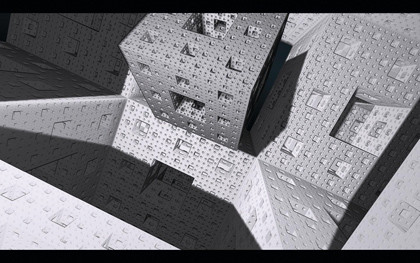Art for art's sake
The focus has shifted slightly towards the artistic side of things in recent years, since the prominent demo platform – the PC – has no fixed hardware on which to truly prove one's programming dominance. But this means that old platforms are still held in some reverence, particularly when it comes to records.
Milking more power out of an ancient 16-bit Atari ST, for example, is a technological challenge that hasn't gone away, even if doing so no longer has any real practical merit. Competition in that area started in 1989 when ST group TheCareBears released a demo featuring a then unheard-of 134 16 x 16 sprites, claiming the 'world record' for most 16 x 16 sprites crammed inside a single vertical blank.
By 2005, after many years of rebuttal demos, code twiddling and optimisations, Oxygene's Leonard pushed the record to an astonishing 312 sprites, and discussions on www.atariforum.com suggest that there may yet be more breathing room to explore.
Modern PCs can certainly help in terms of coding for older machines. Recent standout demo 'Pimp My Spectrum' – a collection of complex effects and in-jokes wrapped in comforting Spectrum colour-clash – essentially involved creator Ate Bit redesigning the 8-bit computer on the fly.
"Technically, it was fairly straightforward. The hard bit was coming up with the concept, story-boarding it, getting the art and music assets created and then putting it all together before the deadline," says coder Paul Grenfel. "I mean, it's got a simple Z80 emulator in there and a load of Z80 code to run the demo, as well as a software rasteriser for the 3D and an AY emulator, but none of those were that tricky to write."
The demo, technically a 64kB PC intro, sticks to its Z80 principles but shows off effects that wouldn't have been considered possible on the venerable processor in its heydey.
Sign up for breaking news, reviews, opinion, top tech deals, and more.
Where next for the demoscene?
The demoscene's longevity has thus far been astounding. It's keeping old computers alive and producing programmers with a concern for tight, neat code – a rarity in today's world of sprawling layers of libraries and resources. But can it survive much longer?
Inigo Quilez thinks so. "Demosceners will certainly keep following new gadgets like Larrabee or GPUs," he suggests. "As soon as there's new hardware, there will be a demoscener who will do something new, astonishing and beautiful with it."
And in terms of the artistic side? "I'm not sure. We will perhaps see a fusion with other art scenes, as today we still stick to our own (ugly) design axioms and rules." But whatever else changes, one thing is unlikely to alter: non-interactivity.

CORPORATE BACKING: Orb's Stargazer won top prize at NVScene 2008, which is a coding competition sponsored by Nvidia
While many demosceners have gone on to proper jobs within the game industry – Finnish company Remedy Entertainment started in the demoscene and went on to write the Max Payne games, for example – demosceners themselves thrive on fixing the parameters. "Interactivity and real-time coding were very valuable in the past, but not anymore," says Quilez.
"Anybody can do real-time today – even Flash developers! Non-interactivity is very important, as we can plan the piece as if it was a movie, placing cameras exactly where we want and not where the user or the random music of a DJ dictates."
Paul Grenfel suggests that the scene continues to this day, "because it keeps evolving. Because there are always new techniques to try out. Because design trends come and go. Because there are people whose entire lives revolve around the scene and because new people are constantly finding out about us, and what we do, and wanting to get involved."
For Quilez, the scene is yet to reach its potential. "My final goal," he says, "is to surprise people with the fact that you can build beauty (both abstract and non-abstract) out of cosines and logarithms. I will continue doing this, and hopefully find a good channel to express this idea to the mainstream public."